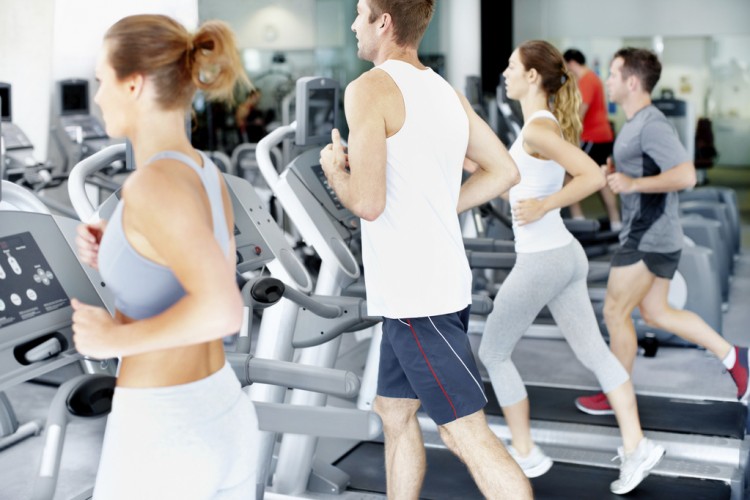Conventional wisdom says the best way to build your fitness is to lace up your runners, find your ‘Cardio Zone’ and stay there for 45-60 min several times per week.
But increasing evidence is piling up suggesting this is – in fact – not the best way to get lean, strong and fit and can actually be downright dangerous.
In part 1 of this blog I went pretty deep into the nuts and bolts of how the body responds to exercise and the broad effects of buying into the cardio myth.
In this post I want to get specific and look at some key by-products of chronic cardio and how that may be holding you back from reaching your health and fitness goals.
At the end of the post I will share a simple substitute for your typical ‘cardio’ workout that takes a fraction of the time and will dramatically increase your results.
Before I do let’s lay down some context. All of our recommendations are based around what is optimum. In other words, what is going to best meet your body’s requirements to function in the most optimum way.
Is running for 20-30min better than sitting on the couch? Definitely. Is it the most optimal use of that 30min when you consider your body’s requirements for movement and metabolic demands? Probably not.
While the science is still a little murky, evidence is showing that the real negative impacts start to kick in beyond the 30-min mark of steady state cardio.
Here are the top 5 reasons why Cardio is Not KING
1. Chronic Cardio = Chronic Stress
As we talked about in Part 1 – all exercise causes your body to mount a stress response, and in short duration that’s a good, healthy thing. But when we spend a great deal of time in a stress response things start to break down. Its pretty simple really: Your body can’t be healing and repairing when its under stress – its like a yin/yang kinda thing.
This can start to cause problems for your immune system because it gets put on the back-burner while your body focuses on the stress at hand.
In endurance athletes (marathons, triathlons etc) its not uncommon to see this long-standing stress cause damage to their heart including artery plaquing, arrhythmias and even heart attacks.
2. Repetitive movements lead to overuse injuries.
When it comes to movement, humans are considered ‘generalists’ in the sense that we are pretty adaptable to a huge variety of demands but we don’t standout in any one category (as opposed to other animals who are highly specialized like THESE Gibbon monkeys)
So our bodies are not well adapted to doing 1 thing all the time – like say running. Tissues start to wear-and-tear and eventually breakdown from the mechanical stress. Which means pain and injuries that stop you from doing other activities.
Arguably the 1 thing we are designed to do really well is walk for long distances, something that our ancestors did for hours a day (10-15km/day was normal!). Not surprisingly there’s an almost endless list of benefits from incorporating regular walking into your routine…
To keep it out of the ‘cardio zone’ you should be able to maintain a regular conversation while walking. No heavy breathing required.
3. It causes your body to store more fat and elevates your blood sugar.
Many people take up cardio to lose weight. And while some experience the changes they are looking for, many are left unsatisfied. Why? well it turns out doing steady-state cardio actually signals your body to hold onto fat and increases your blood sugar levels.
This actually makes sense if you think about it: When you do regular cardio workouts you’re effectively telling your body “I’m going to need a constant supply of energy to maintain all this steady-state cardio work, so make sure you have lots on hand…”
And the best way for your body to store up supplies of easily accessible energy? That’s right – Fat. And more specifically – Abdominal fat.
4. It lowers your testosterone levels.
This one might not seem like a bad thing, especially for women (“I don’t want to get bulky anyhow!”) but that doesn’t tell the whole story… While testosterone is essential for building muscle, it’s also a necessary hormone for healthy cell building throughout the body.
Cortisol (that stress hormone we talked about in part 1) gets pumped out when you start exercising and in the short term testosterone gets a good bump up as well. but as you exercise at a steady pace – 30min appears to be the tipping point – testosterone starts to plummet.
The double whammy of increased cortisol and decreased testosterone means muscle loss and impaired tissue repair. In the long run this can lead to more injuries and greater challenges for your immune system.
5. Too Many Opportunity Costs…
I think this is the biggest consideration when you are prioritizing any one type of exercise.
What else could you be doing with that time that may be more effective, safe and ultimately provide you with the best results?
And since TIME (or lack-therof) is the most common barrier to exercising, it makes sense to find the most efficient way to give your body what it needs.
Even if you were able to somehow eliminate all the negative effects of chronic cardio, the benefits you gain are no-where near those that come from consistently lifting heavy, moving fast and improving your mobility.
In fact, when performed properly, these activities come with very few, if any negative consequences.
What should I do instead?
I promised I would give you a simple alternative to cardio that anyone can do and it takes a fraction of the time.
This is a strategy I often use when travelling and need to fit a workout in quickly without any equipment.
Its called the Tabata method and involves alternating between 20s of high intensity work followed by 10s recovery for 4 minutes. Yes you read that right. 4 MINUTES!
The beauty of this is it can be applied to practically any exercise. You could do air squats, push ups, sprints, lunges, jumping jacks, skipping rope, squat jumps, burpees, planks, sit-ups… you are only limited by your imagination.
Let’s say you normally run and like to exercise outside. Walk to your local park to get you body moving and then do Tabata sprints (20s fast-as-you-can sprint followed by 10s slow walk recovery). Walk home to recover. Simple, efficient and effective.
If you’re just getting back into exercising then start with something simple like jumping jacks, step-ups or air-squats.
If you want to make it a bit more challenging choose 2 different exercises and do a double Tabata. Follow the same pattern (20s exercise, 10s rest) but alternate between exercises for a total of 8min. Eg pushups + air squats, Sprint + burpees or jump squats + situps.
Don’t Forget Mobility…
Whether you regularly train or you haven’t done a single exercise since junior high, EVERYONE will benefit from regular mobility exercises.
 Dr. John MacPhee is a Chiropractor, speaker and passionate health and wellness expert. He has inspired thousands of people to take control of their own health using the Life By Design method and lives for the time spent working directly with clients. Dr. John is co-owner of The Wellness Group, the largest Life By Design certified Chiropractic office in eastern Ontario. Apart from full time practice, John maintains a busy speaking schedule, with a particular emphasis on improving productivity and focus at work. Otherwise you can find John training hard at CrossFit 613, exploring Gatineau Park (all seasons!), or holed away studying the latest research at various cafes across the west end.
Dr. John MacPhee is a Chiropractor, speaker and passionate health and wellness expert. He has inspired thousands of people to take control of their own health using the Life By Design method and lives for the time spent working directly with clients. Dr. John is co-owner of The Wellness Group, the largest Life By Design certified Chiropractic office in eastern Ontario. Apart from full time practice, John maintains a busy speaking schedule, with a particular emphasis on improving productivity and focus at work. Otherwise you can find John training hard at CrossFit 613, exploring Gatineau Park (all seasons!), or holed away studying the latest research at various cafes across the west end.


[…] Click HERE to read Part 2 now. […]
[…] Click HERE to read Part 2 now. […]